Flavoxate
Safe 200 mg flavoxateDental hygiene is addressed to remove causes of bacterial contamination corresponding to dental caries and gingivitis in the operative field muscle relaxant 551 buy flavoxate 200mg lowest price. In one examine back spasms 8 weeks pregnant order flavoxate cheap, lack of vagal, hypoglossal, and glossopharyngeal nerve perform mandated a tracheostomy initially of the operation in 12 patients. As a precaution, nystatin rinses and Peridex gargles are performed three times a day 2 days earlier than the operative process. Mupirocin nasal ointment is used within the nasal passages for two days prior to the operative procedure. Preoperative Reduction through Craniocervical Traction "Reduction" by way of skeletal traction is attempted in kids, because 80% of children younger than 12 to 14 years of age with atlantoaxial dislocation or basilar invagination could be reduced, thereby relieving compression on neural buildings and thus avoiding a ventral procedure. A dorsal occipitocervical fixation can then be performed in the lowered position with or with out decompression. In this strategy, the child is placed within the supine position with a pad beneath the shoulders and head. A crown halo is positioned on the equator of the cranium (pins positioned above this aircraft have a tendency to pull out). In kids of ages four to 6 years, six to eight pin fixation is used under common anesthesia. The maximum tightening stress for a 6-year-old is 5 to 6 lb and for a 4-year-old is 4 lb. Preoperative traction is maintained with delicate elevation of the head-15 to 20 levels above the horizontal. Cervical traction is began at 5 to 6 lb in an 8-year-old and elevated to 9 lb by the top of the first day. In the kid in whom an operative procedure is being done for a tumor or a noncongenital abnormality, the crown-halo traction is applied intraoperatively. Although other retractors have been used for the transoral approach, all are a modification or variation of the Dingman retractor. If needed, the mandible could be dislocated beneath common anesthesia to present a higher oral opening. The crown halo is applied with the affected person within the supine place and the top positioned on a horseshoe headrest with 8 lb of traction. We have described dorsal occipitocervical fusion and its variations in a beforehand printed report. The taste bud is break up in procedures that contain the foramen magnum and the inferior clivus. To divide the soft palate, an incision is made starting at the proper of the uvula and extends along the median raphe as a lot as the exhausting palate. Stay sutures which may be hooked up to the sting of the palate divide and fastened between the coiled springs of the Dingman retractor maintain aside the exposure. The longus colli and longus capitis muscles are detached from their medial origin on the ventral floor of the cervical vertebrae and mobilized laterally in a subperiosteal style utilizing bipolar electrocuting cautery and blunt dissection.
Discount flavoxate 200mgOsteochondroma are often invested in a cartilaginous cap muscle relaxant natural remedies cheap flavoxate 200mg fast delivery, which should be excised to prevent recurrence spasms prozac buy flavoxate 200mg without a prescription. Surgery for symptomatic twine or nerve root compression is type of efficient, with enchancment noted in up to 90% of patients. Biopsies should be planned with care, to keep away from tumor seeding along fascial planes or biopsy tracts, both of which enhance the risk of recurrence. Areas of soppy tissue extension or lytic destruction generally have the highest diagnostic yield. The most important shortcoming of needle biopsies is the restricted tissue sampling, which can lead to a nondiagnostic specimen, particularly within the case of densely blastic lesions, necrotic tumors, or vascular lesions. If an open biopsy is decided upon, the biopsy incision should take into account an eventual excision throughout definitive surgical approach. Meticulous technique and homeostasis must be ensured, as hematomas can carry tumor cells alongside fascial planes. Bone windows should be small so as to keep away from introducing instability or pathological fracture right into a diseased spinal segment. Frozen part must be sent to the lab intraoperatively to guarantee enough tissue sampling. Osteoid Osteoma and Osteoblastoma these benign tumors account for ~ 10% of major backbone tumors, have a male predominance (2�3:1), and occur in the second and third decades of life. The two tumor types are distinguished by dimension: tumors with a diameter > 2 cm are classified as osteoblastoma, and tumors with a diameter of 2 mm or more are classified as osteoid osteoma. Traditional surgical treatment consists of intralesional, total excision that, when full, ends in resolution of signs. Tokuhashi et al7 developed a preoperative scoring system primarily based on general condition (Karnofsky score), number of extraspinal bone metastases, number of metastases in the vertebral physique, presence of and resectability of metastases to the major internal organs, major web site of disease (more aggressive histology yielding higher scores), and presence of neurologic deficit (Frankel score) to predict prognosis and lead to some basic suggestions concerning the aggressiveness of treatment. Tomita et al8 also developed a scoring system to guide and further characterize the diploma of aggressive surgical resection, once more using a prognostic scoring system. The validity of the Tokuhashi and Tomita scores, however, has yet to be established. Aneurysmal Bone Cyst these cystic, blood-filled lesions generally happen within the posterior components of the thoracolumbar spine in sufferers within the first to third decades of life, with a slight feminine predilection. Surgical excision is usually curative and could additionally be coupled with preoperative embolization and low-dose radiation remedy. Successful remedy with stand-alone arterial embolization has additionally been reported. These lesions normally stop progress at skeletal maturity, and progressive development later in life should raise suspicion for possible degeneration into chondrosarcoma. These lesions, nonetheless, can become symptomatic during being pregnant, particularly, as pathological fractures, hematomas, or expansile vertebral body lesions. Surgery is often reserved for lesions inflicting pathological fractures or important neurologic deficit.
Diseases - Arachnoid cysts
- McPherson Clemens syndrome
- Chromosome 12, trisomy 12q
- Macules hereditary congenital hypopigmented and hyperpigmented
- Benzodiazepine dependence
- Anorexia nervosa

200mg flavoxate free shippingAs anticipated muscle relaxant anesthesia cheap flavoxate 200 mg otc, C1-C2 fractures entail a comparatively higher risk of instability than an isolated fracture of either the atlas or axis infantile spasms 9 month old order flavoxate without prescription, and the next index of suspicion for instability should be maintained clinically. Many of the prior methods of C1-C2 posterior fixation such because the Brooks-Gallie strategies, Halifax clamping, or other variants of interspinous and posterior column fusions require intact posterior components. More trendy techniques utilizing segmental instrumentation, such as pars, pedicle, lateral mass, laminar, or transarticular screws, have supplanted these older methods and have enabled the surgeon to match the anatomy to the approach and to provide the patient with a higher fee of fusion. Clinical Presentation Although these accidents used to entail a high fee of mortality, improvements in care and triage have enabled the next survival rate. Radiographic Presentation Although lateral radiographs may be initially helpful in recognizing extreme dislocations, they normally fail to diagnose much less extreme accidents. In motor vehicle accidents, pressure is delivered in a sample that causes hyperextension and compression, sometimes resulting in sparing of the C2�3 disk area and ligamentous constructions, reducing the lethality. Over time there have been many classification schemes, and in 1981 a three-pattern system became extensively accepted, reported first by Effendi and colleagues. The Wackenheim line is drawn to lengthen along the dorsal floor of the clivus within the midsagittal airplane. Occipitocervical fusion: posterior stabilization of the craniovertebral junction and higher cervical spine. Transverse Ligament Disruption C1-C2 subluxation can happen with or without the disruption of the transverse atlantal ligament. However, C1-C2 subluxation occurs mostly from odontoid fractures, which less commonly involve disruption of the transverse ligament. Os odontoideum can be a explanation for C1-C2 subluxation however is rela- tively much less common, being an unusual congenital discovering. This patient arrived within the emergency division with a Philadelphia collar that was applied at the scene of the accident (right). The collar reproduced the distractive mechanism of harm and might trigger decompensation of this extremely unstable injury. The relative place of the occipital condyles and C1 was immediately improved by eradicating the cervical collar and immobilizing the top in a neutral position on a backbone board (left). Atlantoaxial Rotatory Subluxation Atlantoaxial rotatory subluxation is more commonly seen in kids and adolescents. Fracture displacement is a significant determinant in the choice to carry out inner fixation. Many combined nondisplaced fractures will heal in a brace and could be followed within the office with serial radiographs, including flexion-extension views. Atlantal-Occipital Dislocation A confirmed atlantal-occipital dislocation is an unstable damage, as the drive concerned in a dislocation is associated with vital ligamentous harm.
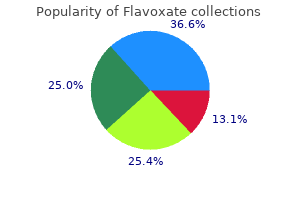
Discount flavoxate 200 mg overnight deliveryThe fusion could additionally be performed instantly following the ventral decompression or zerodol muscle relaxant generic flavoxate 200mg line, alternatively spasms left upper abdomen flavoxate 200 mg otc, these procedures could additionally be staged. Retro-Odontoid (Occiput-C1-C2) Pannus Formation Rheumatoid cranial settling is commonly additionally accompanied by extreme proliferation of granulation tissue and occipitoatlantoaxial pannus formation. This pannus itself or together with the superiorly displaced odontoid course of can produce ventral cervicomedullary compression. Therefore, in instances of cervicomedullary compression and progressive neurologic deficit, a ventral method and decompression is commonly necessary. Anterior subluxation makes up nearly all of these instances, whereas lateral subluxation may occur in ~ 20% and posterior subluxation in fewer than 10%. Atlantoaxial subluxation is the results of erosive synovitis in the atlantoaxial and atlantooccipital joints and within the synovial lined bursa between the atlas, the odontoid process, and the transverse ligament. The atlantoaxial complex is dependent upon the transverse and alar ligaments and to a lesser degree on the apical ligaments for stability. Bony adjustments to the dens additionally contribute to instability and embrace loss of volume, osteoporosis, angulation of the softened bone, and occasional fracture. Even with minimal irregular motion, exuberant pannus formation across the odontoid could additionally be enough to impinge on the spinal twine. The cervical cord is especially weak to compression when the neck is flexed because C1 slides forward on C2. The medical manifestations of C1C2 instability could arise from compression of the medulla, the higher cervical spinal cord, and occasionally the vertebral arteries. Compression of the spinal twine at the C1C2 stage can also produce ischemia in more caudal parts of the cervical wire, particularly in the anterior horn. The most frequent complaint of sufferers with C1C2 subluxation is pain, which is present in 60% of circumstances. The pain is commonly biggest in the upper neck and regularly radiates to the occiput or vertex. The ache associated with C1C2 subluxation is usually elevated with neck flexion and rotation and is often accompanied by a "clunking" sensation or a sense of the head falling ahead with flexion and rotation motions. With advancing spinal wire or medullary compression, these sufferers could complain of weak point or incoordination of the arms or legs, vertigo, gait abnormalities, and, not often, bowel or bladder problems. These research are invaluable in sufferers with a neurologic deficit and for preoperative analysis. A spinal wire diameter of lower than 6 mm leaves the affected person vulnerable to myelopathy. Two indications for surgical management are severe or unremitting pain and the presence of neurologic deficits.
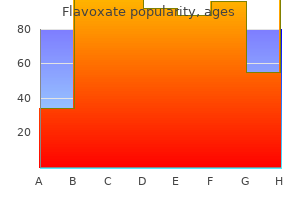
Flavoxate 200mg cheapThe true prevalence is troublesome to decide secondary to the rarity and the occult nature of this lesion spasms medicine order genuine flavoxate on line. When signs do occur spasms foot buy flavoxate visa, they commonly embody pain and bowel or bladder dysfunction doubtless related to compression of adjoining dorsal. On gross pathology, neurenteric cysts have a thickened outer membrane with a fluid-filled straw-colored middle. Surgical resection is the first-line remedy for patients with neurologic deficits or significant debilitating pain. Complete resection may be troublesome and dangerous due to related spinal vertebral abnormalities or adherence to nearby neural or vascular buildings. Cysts Intraspinal Cysts Intraspinal cysts, also called congenital spinal meningeal cysts, are a heterogeneous group of congenital spinal cysts distinct from neurenteric cysts. They are generally classified based mostly on histopathology and on location throughout the spine. Histopathologically, the cyst is lined by fibrous connective tissue and has a single layer of simple cuboidal epithelium. Treatment for a growing symptomatic sacral meningocele is surgical ligation and obliteration of the cyst. They are situated between the perineurium and endoneurium, hence the name perineural cyst. A perineural cyst appears as a dilatation of the arachnoid and dura of the spinal posterior nerve root sheath. In the remaining 20% of instances, reported symptoms include again ache, sacral radiculopathy, urinary incontinence, bowel dysfunction, dyspareunia, and belly pain. Grossly, the perineural cyst originates on the junction of the dorsal nerve root ganglion and has a transparent to barely cloudy cyst wall, with the nerve root traversing by way of or throughout the cyst wall. Histopathologically, the outer wall is epineurium lined by arachnoid and the inner wall is lined with pia mater. For patients with pain, conservative medical management with antiinflammatory drugs and bodily therapy are appropriate. Surgical remedy, when indicated, includes microsurgical excision of the cyst with duraplasty or plication of the cyst wall. Patients can present with ache, paraparesis, hyperreflexia, paresthesias, and bowel or bladder incontinence. The lesion is hypointense on T1-weighted imaging and hyperintense on T2-weighted imaging. Histopathologically, the cyst wall is fibrous and lined with meningothelial cells. Unlike extradural spinal meningeal cysts, intradural spinal meningeal cysts are usually fenestrated rather than resected. Neuroepithelial Cysts Also often known as ependymal cysts, these are extraordinarily rare lesions, with only 18 intraspinal cases reported in the literature. Clinical presentation has typically been reported as a slowly progressive myelopathy or a sudden deterioration following trauma.
Arctium (Burdock). Flavoxate. - Are there safety concerns?
- Are there any interactions with medications?
- How does Burdock work?
- What is Burdock?
- Fluid retention, fever, anorexia, stomach conditions, gout, acne, severely dry skin, and psoriasis.
Source: http://www.rxlist.com/script/main/art.asp?articlekey=96153
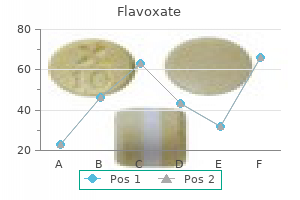
Buy flavoxate discountGentle traction on the tumor can be utilized with a small traction suture in the pial floor of the tumor spasms between ribs generic 200 mg flavoxate mastercard. The well-defined airplane between the tumor and the spinal twine is progressively developed with traction on the tumor with a microdissector muscle relaxant examples purchase 200 mg flavoxate otc, tumor or microcautery forceps, or suction tip, and blunt gentle countertraction on the spinal twine with a microdissector. Deep fibrous attachments and bridging vessels are systematically isolated, cauterized, and divided. Prolene pial traction 6-0 sutures could additionally be used to provide mild retraction to enhance visualization and facilitate the intramedullary resection. Typically, no much less than one major draining vein is left patent on the polar margin of the tumor until dissection of the intramedullary tumor component is completed. These dorsal root fascicles should often be mobilized and divided to facilitate tumor removing. Once the interface between the pia and the tumor is identified, it must be circumferentially indifferent. On its outer surface, an epipial matrix of arachnoid is loosely connected to the pia. The superficial vasculature of the spinal twine is loosely hooked up to the spinal twine surface within this epipial layer. Sharp dissection of the epipial arachnoid permits mobilization and isolation of floor draining veins to be cauterized and divided so that precise visualization of the interface between the tumor and the intima pia may be achieved. Unlike the brainstem and cranial pia, the spinal intima pia is a strong membrane made up of longitudinally oriented fibers which have a attribute glistening, white, striated look beneath the working microscope. The intima pia is densely adherent to the underlying glial outer limiting membrane of the spinal cord. Detachment of this well-defined sturdy membrane requires sharp dissection with a microknife or scissors. After the margin of the tumor has been circumferentially indifferent from the encompassing regular pia, removal of the intra-. Potential Complications and Precautions the most typical issues relate to wound issues, an infection, and thromboembolic occasions. Sequential compression devices, initially positioned instantly prior to sur- gery, are continued postoperatively until the affected person is sufficiently mobilized. Subcutaneous heparin (5,000 units twice a day) or low molecular weight heparin (enoxaparin forty mg each day) may also be thought of on or about postoperative day 2, however may improve the risk of wound hematomas. Delayed leaks might produce solely contained pseudomeningoceles that normally spontaneously resolve over several weeks. Persistent collections, especially related to postural complications, could require reoperation for restore. These sufferers are normally returned to the operating room for restore within 24 to 36 hours if the leakage persists. Nearly all patients experience some degree of posterior column deficit following midline myelotomy. This concern ought to be mentioned with the affected person as a half of the preoperative preparation.
Order flavoxate online pillsThis may be accomplished later but ought to be carried out before eradicating a considerable a part of the vertebral physique muscle relaxant hyperkalemia purchase generic flavoxate line. We choose putting a temporary rod after finishing the osteotomy on the primary aspect and before working from the contralateral aspect muscle relaxant without aspirin flavoxate 200mg overnight delivery. A cautious subperiosteal dissection of the gentle tissue is carried out along the lateral wall of the vertebral physique utilizing a small Cobb elevator, as talked about earlier. It could be managed by electrical cauterization or hemostatic agents corresponding to Surgicel, Gelfoam, and cottonoid. The pedicles are recognized bilaterally and are resected with a Leksell rongeur following by piecemeal resection of the vertebral physique and the disks above and under without interfering with the posterior vertebral wall, which is stored intact until the end to protect the thecal sac. This can be carried out using the decancellation method or osteotomies, as mentioned earlier. Bone resection should be wedged in the sagittal aircraft and could additionally be uneven or symmetric within the coronal aircraft to appropriate kyphosis and also the scoliosis element. The bone should be eliminated fully to be sure that anterior cortical breakage occurs. It is usually essential to place an anterior structural cage inside the defect before complete closure to keep away from shortening the spine excessively. The momentary rods are changed with definitive rods, and the correction is progressively achieved with a combination of cantilevering and compression to appropriate the deformity. Sometimes in a affected person with an unexplained deficit with a big deformity correction, the correction might should be reversed within the absence of any apparent trigger. The use of thromboembolic stockings and sequential compression units ought to be continued all through the restoration interval. Physical therapy, including ambulation training and mobilization, should be began as quickly as potential. The use of nonsteroidal anti-inflammatory medication is avoided early within the postoperative interval. Potential Complications and Precautions Lumbar osteotomies are technically challenging procedures that require in depth coaching and experience and can be related to important problems. A thorough and multidisciplinary preoperative analysis, cautious surgical planning, sound judgment, meticulous operative methods, and early postoperative mobilization can reduce the potential issues associated with lumbar osteotomies. Application and improvement of minimally invasive osteotomy strategies may reduce the chance of the complications related to open deformity surgical procedure. We favor utilizing vancomycin powder throughout open posterior spinal instrumentation to reduce the danger of wound infection, as has been shown recently in a quantity of research.
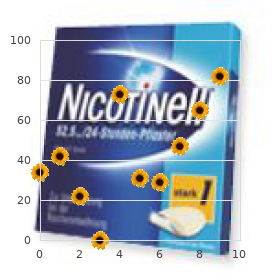
Order flavoxate with a mastercardC2 pedicle entry level: 5 to 6 mm lateral to the lamino-articular junction muscle relaxant shot discount flavoxate 200 mg with mastercard, three mm cranial to the inferior articular aspect muscle relaxant orange pill order flavoxate with a mastercard. If a vertebral artery harm happens, insert a screw and abort the contralateral facet or opt for translaminar fixation. C2 translaminar fixation: staggered the insertion factors; goal contralaterally parallel to the laminar floor. Postoperative Care Unless C1-C2 fixation is being carried out as part of a more complicated process, the affected person is extubated within the working room and transferred to a daily hospital room. We utilize a inflexible cervical collar, such as the Aspen or Miami J, for the preliminary 6 weeks, which has the principle impact of restricting flexion and extension. Ambulation is started immediately after surgical procedure and the affected person can be discharged on the first postoperative day, after anteroposterior and lateral radiographs are obtained. If this harm occurs during the publicity section, cranial to C2, each try should be made to restore the injury because the artery should be seen within the subject. On the other hand, if the injury occurs through the drilling section, restore is far more troublesome. This might happen if the drill skips laterally over the C1 articular mass or when drilling the pars or pedicle of C2. In the former scenario, the vessel needs to be recognized and repaired or ligated. Both arteriovenous fistulas and pseudoaneurysms have been reported, although one of the best methodology (occlusion versus stenting) and timing (immediate versus delayed) for endovascular remedy of stable (nonbleeding) injuries is a topic of debate. Craniovertebral instability because of degenerative osteoarthritis of the atlantoaxial joints: evaluation of the management of 108 instances. Posterior C2 fixation utilizing bilateral, crossing C2 laminar screws: case series and technical observe. Risk of vertebral artery harm: comparison between C1-C2 transarticular and C2 pedicle screws. Comparison of screw malposition and vertebral artery damage of C2 pedicle and transarticular screws: metaanalysis and evaluation of the literature. Atlantoaxial transarticular screw fixation: a evaluate of surgical indications, fusion rate, complications, and classes realized in 191 adult sufferers. Is the technique of posterior transarticular screw fixation appropriate for rheumatoid atlanto-axial subluxation The prevalence of the ponticulus posticus (arcuate foramen) and its importance within the Goel-Harms procedure: meta-analysis and evaluation of the literature. Routine insertion of the lateral mass screw by way of the posterior arch for C1 fixation: feasibility and associated issues. C2 nerve root transection throughout C1 lateral mass screw fixation: does it affect functionality and quality of life C-2 neurectomy during atlantoaxial instrumented fusion within the elderly: patient satisfaction and surgical consequence. Postoperative occipital neuralgia with and without C2 nerve root transection during atlantoaxial screw fixation: a post-hoc comparative consequence research of prospectively collected data.
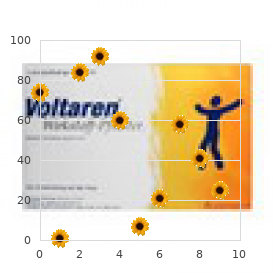
Buy flavoxate 200mg on lineIndications9�11 spasms calf muscles buy flavoxate 200mg overnight delivery,13 spasms lower left side flavoxate 200mg free shipping,19 the objectives of cervical disk arthroplasty are to restore the intervertebral disk and foraminal top so as to forestall recurrence of nerve root compression along with preservation of movement. Symptomatic cervical disk pathology should be treated with a trial of nonoperative management earlier than embarking on surgical remedy. Patients with cervical radiculopathy secondary to central or paracentral disk herniations and patients with minimal spondylosis at one or two ranges are potential candidates for anterior cervical arthroplasty. Cervical arthroplasty replaces solely the disk and requires the posterior components, such because the sides and ligaments, to be intact and useful. In addition, patients with cervical kyphosis, cervical spondylolisthesis with incompetent facets, severe multilevel cervical spondylosis (three or more levels), extreme osteoporosis, or cervical trauma are sometimes excluded from this procedure. Arthroplasty might auto-fuse over time, obviating the potential benefits of motion preservation. The metal finish plates have a keel design for enhanced major stability and fixation, and the tip plate coverage with titanium plasma spray coating permits bony ingrowth and long-term fixation. Patient Positioning Intraoperative positioning of the affected person is important to the appropriate sizing and placement of a cervical arthroplasty. The arthroplasty device is designed to be placed in a neutral or mildly lordotic cervical spine. The shoulders are caudally retracted to help with intraoperative fluoroscopic visualization. Intraoperative neuromonitoring with somatosensory evoked potentials and/or electromyography is optionally available. Intraoperative fluoroscopy is used to affirm and mark the extent of surgery and to ensure that the vertebral stage of curiosity can be visualized with lateral fluoroscopy. The deeper lateral carotid sheath is dissected from the medial tracheoesophageal bundle using a Kittner dissector. A localizing fluoroscopic X-ray is taken to identify and ensure the levels of meant arthroplasty. Once the extent is confirmed, handheld retractors are used to expose the longus colli muscles, that are mobilized subperiosteally with bipolar cautery and a Penfield elevator. A self-retaining anterior cervical retractor is positioned under the elevated edges of the longus colli muscle tissue. Instead of the common Caspar distractor pins, the retainer screws are inserted precisely parallel to the tip plates as far away from the disk house as attainable. An axe should be used to initially perforate the cortex before placement of the retainer screws. Fluoroscopy should be used to verify the trajectory and depth of the retainer screws. The retainer is assembled and a lightweight pretension is utilized, avoiding the try and really distract the disk house, which might be performed later with the usage of actual distractor.
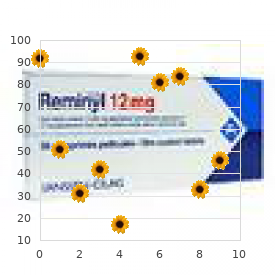
Flavoxate 200 mg without a prescriptionThen spasms prednisone buy 200mg flavoxate with mastercard, the first layer of muscles (trapezius and latissimus dorsi) is recognized and sectioned muscle relaxant cyclobenzaprine high generic flavoxate 200mg with visa. In sequence, the second layer of muscles (rhomboids and serratus) is uncovered and sectioned. After exposing the rib, the periosteum is stripped off its surface with monopolar electrocautery. A curved periosteal elevator is then used to strip the intercostal muscular tissues from the rib. Due to the directional nature of the intercostal muscle attachments, blood loss and tissue trauma could be decreased by stripping the tissue from posterior to anterior on the cephalad side of the rib, and from anterior to posterior on the caudal surface. At this point, it could be very important carefully dissect the periosteum, neurovascular bundle, and parietal pleura from the undersurface of the rib in order that they can be preserved. In youthful patients, entry into the thoracic cavity may be performed by way of the costal interspace after insertion and opening of a rib spreader, as the ribs are sufficiently mobile. It is advisable to reduce the rib on the costochondral junction and as far posteriorly as possible, and then take away it. As a lot of the lateral transthoracic approaches to the spine involve some type of fusion, the rib could be saved to be used as a bone graft. One is to proceed via a transpleural method, by which case the parietal pleura is sharply incised and the lung is fastidiously retracted to expose the backbone. If the transpleural method is chosen, the lung is gently retracted anteriorly and inferiorly and could additionally be protected with a moist laparotomy sponge. Other essential anesthetic issues, similar to the need of large-caliber venous access for volume reposition as nicely as available type-and-crossed blood, are similar to those required for complicated thoracic procedures that may ultimately involve vital amount of blood loss. Positioning and Monitoring the operation is performed on a radiolucent desk with the patient placed in the lateral decubitus place supported by either a beanbag or by foam helps in order to avoid undesirable movements in the anteroposterior path. An axillary roll must be placed underneath the arm over which the affected person is lying to shield the brachial plexus. The desired spinal degree may be placed in proximity to the break within the desk in order to assist within the exposure by opening the disk spaces as well as to facilitate the anterior column reconstruction. The affected person is secured to the desk, and the spinal stage is marked on the pores and skin utilizing anterior and lateral fluoroscopy. Note that the incision is usually made alongside the course of the rib two interspaces above the vertebral level to be addressed. The incision is performed from the anterior border of the latissimus dorsi to the midaxillary line, although it can be extended anteriorly to the costochondral junction.
|

